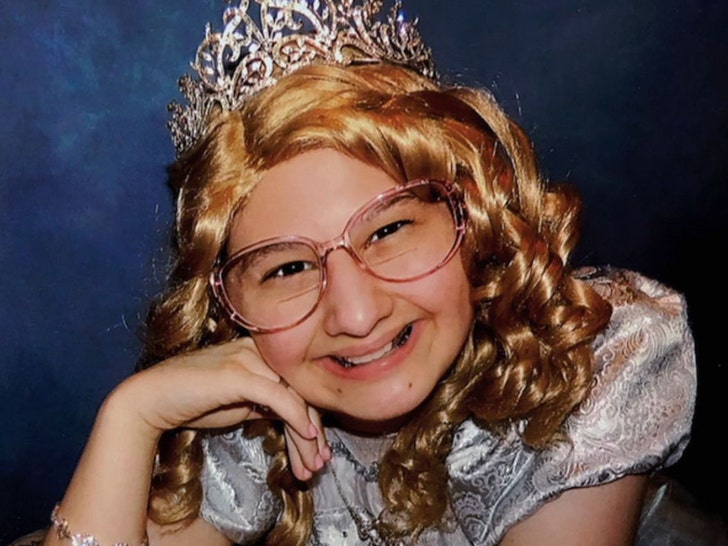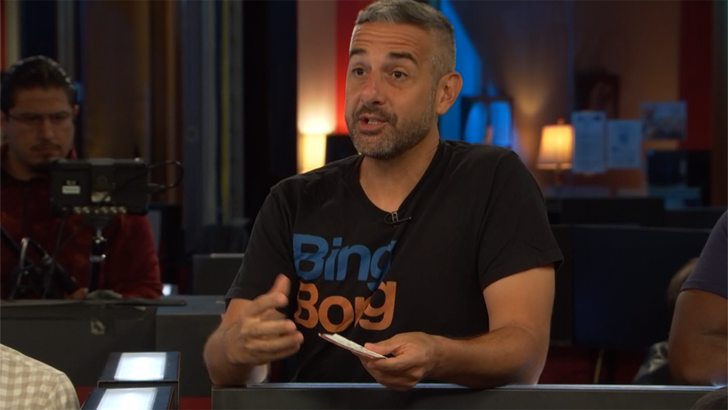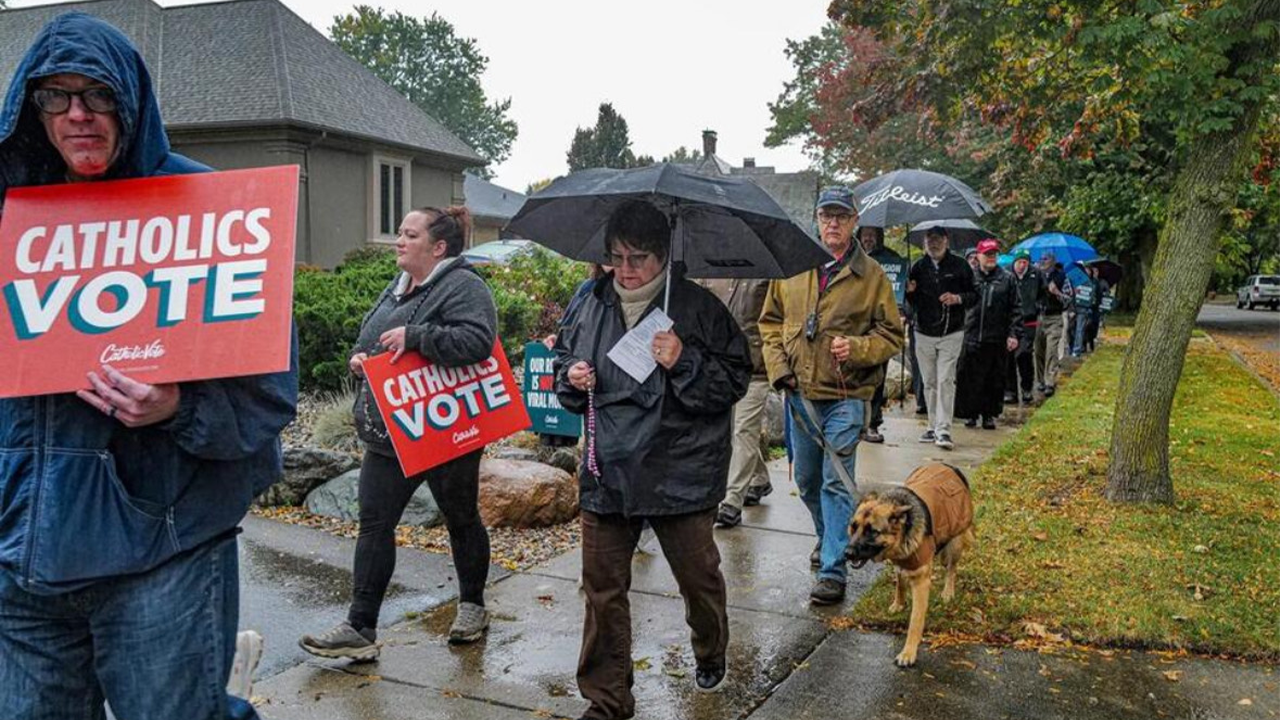Lifestyle
This 71-year-old pole dancer defies expectations — and gravity — in age-obsessed L.A.

Dressed in 7-inch neon heels and translucent yellow bell-bottoms, Mary Serritella was defying gravity and expectations on a recent Wednesday night at Hollywood’s Bourbon Room.
Spinning gracefully around a silver pole to disco medley, she contorted her body into a series of improbable positions with even more improbable names like “The Chopstick,” “The Jade Split” and “The Black Sun split” — a showstopper in which she gripped the pole between her belly and thigh and hung upside down holding a foot with each hand.
It was a dazzling display of flexibility and sensual athleticism and the crowd loved it. But when Serritella, who performs under the name Mary Caryl, revealed after the September performance that she had just celebrated her 71st birthday, the room exploded. A young woman in the front row pumped her fist in the air. Another made a bow, reminiscent of the “we’re not worthy” bit from “Wayne’s World.”
“You never lose it if you never let it go,” Serritella told the audience. “And five years ago I had a hip replacement. I’m a bionic woman!”
The crowd roared again.
Christina Calph, who booked Serritella to perform that evening at the Comedy Pole Show she hosts, said Serritella is an inspiration.
“I see her and I think, ‘Oh my God, I can be beautiful for the rest of my life,” Calph said.
In a city where de-aging procedures can be as routine as tooth cleanings, Serritella’s pole dancing prowess serves as an embodied reminder that getting older doesn’t have to mean forfeiting beauty, sexuality, strength or the activities you love.
Serritella still wears high heels, performs in bikinis and posts videos of herself on Instagram. She works out at least five times a week to maintain the upper body strength and flexibility required to climb a pole and bend, twist and coil herself into positions that seem impossible for most women several decades her junior.

Serritella at the sewing machine in her home in Northridge. She often sews her own pole dancing costumes.
(Marcus Ubungen / Los Angeles Times)
She still deals with certain inconveniences of age — arthritis makes gripping the pole difficult and there was that hip replacement.
“When I wake up in the morning I’m a little stiffer than I used to be, and early on I sprained a knee,” she said. “But it’s like that old serenity prayer: Accept the things you can’t change, and change the things you can.”
Serritella, who lives in Northridge, started pole dancing in 2010 when she was 57, the same year the youngest of her three children graduated from college. A friend from the fundraising committee at her kids’ school mentioned that she’d started taking pole dancing classes at a gym. On a whim, Serritella asked if she could come. She was only able to learn a few moves before the gym disbanded the class, but she was hooked.
“I wasn’t good. I couldn’t climb the pole. I couldn’t do anything,” she said. “But I wanted to.”

Serritella stretches at home. She exercises at least five times a week to maintain the upper body strength and flexibility required to climb a pole.
(Marcus Ubungen / Los Angeles Times)
She found other studios to train at including the Vertitude L.A. in Canoga Park and Choreography House in North Hollywood (now closed), sometimes sticking around for three lessons in a single evening.
“Both of them had incredible owners and instructors and they would bring in other incredible instructors from around the world, so I feel like I had the best training,” she said.
Modern pole dancing originated in strip clubs in the 1950s but became more mainstream in the past few decades as gyms and boutique studios that taught the activity sprung up around the country. Since 2009, the International Pole Sports Federation and other organizations, have pushed to get pole dancing included in the Olympics. (In short, they are on an uphill climb).
As pole dancing has grown more popular as an exercise and sport, a variety of styles have emerged. Some performers emphasize athleticism and aerial tricks, others storytelling and emotional resonance. Raw sexuality remains a pillar in many routines. Serritella embraced them all.
“I remember taking a class with a parole officer who was teaching all these trashy moves on the pole and the chair,” she said. “I was like, ‘OK this is me at 57 years old and I’m learning all this fun stuff.’”

Serritella has won many awards for pole dancing over the years.
(Marcus Ubungen / Los Angeles Times)
In 2011, she entered her first pole dance competition in the 40-and-over masters category just three months after she started taking classes. The organizers of the competition, the Pole Sport Organization, called her on a Tuesday to ask if she would compete the coming Saturday. It was a ridiculous deadline, but she had a costume in mind and had been working on a routine, so she said yes.
“I was like, ‘Am I crazy?’” she said. “But it’s always been my personality to do things and not be afraid.”
Her first solo performance was at a showcase put on by the Vertitude. She dressed up as Mrs. Claus and danced to “Santa Baby.” More recently, in 2023 she took first place in her division at Pole Art Italy, an international competition for a country “dancin’ and romancin’” themed performance to a medley of “These Boots Are Made for Walking,” “I Only Date Cowboys” and “Lady.” She wore pink cowboy boots, a beaded pink cowboy hat, a tie-front sports bra and denim pole shorts.
“Burlesque and comedy are my favorite styles,” she said. “Some dancers really love dramatic music. That’s not me.”

Serritella has maintained her flexibility through competitive pole dancing.
(Marcus Ubungen / Los Angeles Times)
Her family has mostly been supportive of her dancing. Tony, her husband of 33 years, recalled that his wife hosted a local public access television show called “Images With Mary Caryl” in the ‘90s and in 2012 appeared on “Alt for Norge,” a reality television show that brings Americans of Norwegian ancestry to Norway to compete in cultural challenges.
“Nothing she does surprises me,” he said.
As for her kids, Serritella said her daughter loved it when she started pole dancing, but it took her sons longer to come around.
“I think they were shocked that I had this fun side to me,” she said. Still, her middle son and his wife were in the audience when she performed at the Bourbon Room.
“I’ve learned to roll with it,” he said.
Among her younger pole dancing friends, Serritella is a hero. Teresa Fischer, a teacher at Luscious Maven, the North Hollywood studio where Serritella dances now, described her as “a legend in the industry.” Stephanie Pozos, another friend from the studio, said you can’t take your eyes off her.
“She has incredible flow, and she really knows how to show off what she’s good at and play to her strengths,” Pozos said.
Angelina Medina, who started pole dancing 2½ years ago, said Serritella’s style is a lot like her personality: bubbly and entrancing.
“I love that she’s defying society’s narrative,” she said. “I just turned 33 and society tells us as women that life is over after 30. It’s really not.”
Serritella has a background in beauty. She sells makeup out of her home, designs and sells a line of pole dancing clothes, and worked as an image consultant, helping women with their hair, makeup and wardrobes. When her friends and clients ask her for beauty tips, she’s happy to oblige.

Serritella performs in front of a live audience during the Comedy Pole Show at the Bourbon Room in Hollywood in September.
(Gina Ferazzi / Los Angeles Times)
“My two big ones are drink water and keep moving to help you flush out everything you take in,” she said. “A lot of times you see people who are my age and they are puffy eyed and they have bloat. That’s what it is — lack of water, lack of mobility.”
Other tips include wear foundation every day to lock your moisturizer in and protect your skin from the elements. Eat healthy, but don’t worry about being perfect. And indulgence is an important part of life, whether it’s a new lipstick, a slice of birthday cake, or coffee with a friend.
It’s all helpful, (and I did start putting collagen in my coffee after she told me she’s been doing it for 10 years), but Serritella’s real super power is her ability to buck society’s ingrained fear of aging and live the life she wants.
“So often through the years women would say things to me like, ‘I can’t wear heels anymore’ or whatever it was, and I would put a psychological bubble around myself,” she said. “I just didn’t want to absorb that ‘I can’t’ attitude.”
It might take more work than it once did for an older woman to feel beautiful and strong, but that doesn’t mean it’s not possible, she said. If there’s something you want to do, try it.
“We say our children are our future, and that’s true, but we’re they’re future too,” she said.

Serritella backstage before performing during the Comedy Pole Show at the Bourbon Room in September.
(Gina Ferazzi / Los Angeles Times)
Back at the Bourbon Room, Serritella crept into the audience after her performance, looking less like a bombshell and more like a hot mom in jeans and a gray tank top. She was still wearing her 7-inch heels. She couldn’t find her tennis shoes in the green room. When the lights went down and the next act came on, she dropped to her hands and knees and crawled through the crowd to her seat. She didn’t want to disturb anyone’s view.
The next performer was a comic named Annie Lederman who is three decades Serritella’s junior. She stepped up onstage and surveyed the crowd.
“I have to follow Mary?” she said, despondent.
The audience laughed in sympathy.

Lifestyle
Modest moments become revelatory in the wry and incisive 'Shred Sisters'

Shred Sisters
Grove Atlantic
hide caption
toggle caption
Grove Atlantic
I was in the mood for a novel about family relationships, something Cheever-esque. Maybe, I thought, a sharp, contained work of fiction would be a temporary antidote to a world that feels out of control.
Because I admired Betsy Lerner’s 2016 memoir The Bridge Ladies, I thought her new debut novel, Shred Sisters, might just be the right choice. Turns out, I landed on a good book for the wrong reasons.
Shred Sisters is, indeed, incisive and wry; but, given its central subject — an upper-middle-class, Jewish, suburban family all-but-capsized by the mental illness of one of its members — this novel is anything but contained and controlled.
Shred Sisters spans the 1970s through the 1990s and focuses intensely on the relationship between the two Shred sisters who live with their parents in New Haven, Conn. Amy, the younger sister, is our narrator: She’s small, shy, a scrupulous obeyer of rules. One of her favorite games as a kid is one she calls “Movies” where she “scatter[s] garbage on the floor and sweep[s] it up” — like a theater usher.
Older sister Olivia, known as “Ollie,” is the star of the family: She’s beautiful, charismatic and — as becomes increasingly clear during her teenage years — she struggles with mental illness. Here are snippets from the opening of the novel, which takes place when Amy is 10 and Ollie is 14. Amy recalls that:
By the time [Dad] reached Ollie, she was soaked in blood.
Ollie had dared me to jump on the couch with her. Using the thick cushions as a trampoline, she made a swishing sound as she jumped, touching the ceiling and dunking an imaginary basketball. Only when she took a jump shot from the side, not realizing the power in her legs, she crashed into the picture window behind the couch. For a second there was silence, then the window splintered into a web of shards that rained down on my sister …
Later [Ollie] joked that she looked like a giant tampon …
That opening gives fair warning of the erratic periods of chaos and exhaustion that will define the Shred family’s life for decades — especially as Ollie begins stealing things, raging and disappearing. She’s eventually sent to a psychiatric hospital that Amy and her parents tactfully refer to as “The Place.”
One of the aspects of coping with mental illness that Lerner vividly captures is the limits of 1970s and ’80s psychiatry to treat what Amy later speculates is bipolar disorder. The Shred parents never get a diagnosis for Ollie; Amy, left on her own, reads popular books of the era to try to grasp what’s going on: “They all had a girl on the cover [Amy tells us], brunette and brooding. Go Ask Alice … The Bell Jar. None of the girls reminded me of Ollie.”

After two years, Ollie is discharged, unchanged, and disappears for even longer stretches. Drained of energy for each other, the Shred parents, Amy says, “split slowly, like the subterranean forces that pulled apart the jagged coasts of South America and Africa.”
As she did in The Bridge Ladies, Lerner elevates what may sound like yet another pop saga of endurance, measured recovery and forgiveness into a closely observed story that’s ragged and wry. The final two-thirds of this novel focus on Amy herself — the usher in the shadows who’s spent decades powerlessly observing and cleaning up after this family movie.
Change, as we know, is hard; but, there’s a moment where the adult Amy, who’s been demoralized by loneliness and career failure, spontaneously walks into a hair salon. She’s pulled in by a sign that reads: “Never give up on your hair.”
These are the kind of revelatory ordinary human moments Lerner captures with precision. As an affirmation, “Never give up on your hair” turns out to be a more modest way to declare, “I will survive.”
Lifestyle
Sunday Puzzle: The 'Pits' puzzle

Sunday Puzzle
NPR
hide caption
toggle caption
NPR
On-air challenge: Today’s puzzle is called “The Pits.” Every answer is a familiar two-word phrase or name in which the first word starts PI- and the second word starts with T-.
Ex. Jewelry and precious metals in a hidden chest –> Pirate Treasure
- Where to sit for a meal at a park
- Light to moderate-size vehicle for hauling supplies
- Intimate conversation in bed
- Person who repairs a baby grand, for example
- Large part of an old television on which the image appears
- Physical condition in which the ends of the feet point inward
- Symbol of Maine that’s shown on the state flag
- Prime minister of Canada in the 1960s, ’70s, and ’80s (and father of the current P.M.)
- Sausage, pepperoni, and mushrooms are the most common ones
- Loose leaves that are packed into a small bowl and smoked
- Colored geometric shape that’s a symbol for gay rights
Last week’s challenge: Last week’s challenge comes from listener Joe Krozel, of Creve Coeur, Mo. Think of a place in America. Two words, 10 letters altogether. The first five letters read the same forward and backward. The last five letters spell something found in the body. What place is this?
Challenge answer: New England
Winner: Bob Jahn of Blue Mounds, Wisconsin.
This week’s challenge: This week’s challenge comes from listener Mike Selinker, of Renton, Wash. Think of something to drink whose name is a compound word. Delete the first letter of the first part and you’ll get some athletes. Delete the first letter of the second part and you’ll get where these athletes compete. What words are these?
Submit Your Answer
If you know the answer to the challenge, submit it here by Thursday, October 17th, 2024 at 3 p.m. ET. Listeners whose answers are selected win a chance to play the on-air puzzle. Important: include a phone number where we can reach you.
Lifestyle
Gypsy Rose Recommends Menendez Bros Get Therapy If Released From Prison

BACKGRID
Gypsy Rose Blanchard has some advice for the Menendez Brothers … saying the outside world is so different — and, a good therapist goes a long way.
We caught up with Gyspy at LAX Sunday … and, we had to ask her about the Erik and Lyle Menendez who are serving life sentences for murdering their parents — though their case is receiving renewed attention over evidence supporting the claims their dad sexually abused them.
GRB — who was sentenced to 10 years in jail for second-degree murder of her mother, Dee Dee Blanchard, who abused her — says she’s not super educated on the intricacies of the Menendez case … but, she stands for all victims of abuse.
She says abuse victims need to be advocated for more and prisons need to be reformed … and, she hopes something can be done if Erik and Lyle were abused.

When told Kim Kardashian‘s supporting Erik and Lyle, Gypsy calls the reality star and mogul “a wise woman” … and applauds her for her prison reform work.
As for her advice for the Menendezs … she says the world is so different now, it can be hard to adjust. She recommends getting into therapy to help adjust to today’s day and age.
TMZ.com

The Los Angeles County D.A. is looking over the Menendez case … after a member of the band Menudo accused Jose Menendez of sexual abuse, just like his kids did. The D.A. will make a determination about whether the brothers deserve a new trial or a shorter sentence soon.
In any case, sounds like Gypsy’s available to dispense advice if Erik and Lyle do get out.
-

 Health1 week ago
Health1 week agoHealth, happiness and helping others are vital parts of free and responsible society, Founding Fathers taught
-

 Sports1 week ago
Sports1 week agoFreddie Freeman says his ankle sprain is worst injury he's ever tried to play through
-

 News1 week ago
News1 week agoLebanon says 50 medics killed in past three days as Israel extends its bombardment
-

 Entertainment5 days ago
Entertainment5 days agoHold my beer can: Museum says a worker thought unique art installation was trash
-

 Entertainment6 days ago
Entertainment6 days ago'The Office' star Jenna Fischer reveals private breast cancer battle: 'I am cancer free'
-
/cdn.vox-cdn.com/uploads/chorus_asset/file/25673932/462754179_560996103109958_6880455562272353471_n.jpg)
/cdn.vox-cdn.com/uploads/chorus_asset/file/25673932/462754179_560996103109958_6880455562272353471_n.jpg) Technology2 days ago
Technology2 days agoMeta suggests AI Northern Lights pics are as good as the real thing
-

 Technology4 days ago
Technology4 days agoScammers exploit grief with fake funeral streaming on Facebook
-

 Lifestyle1 day ago
Lifestyle1 day agoIs the free speech debate dead? Plus, the devil! : It's Been a Minute















